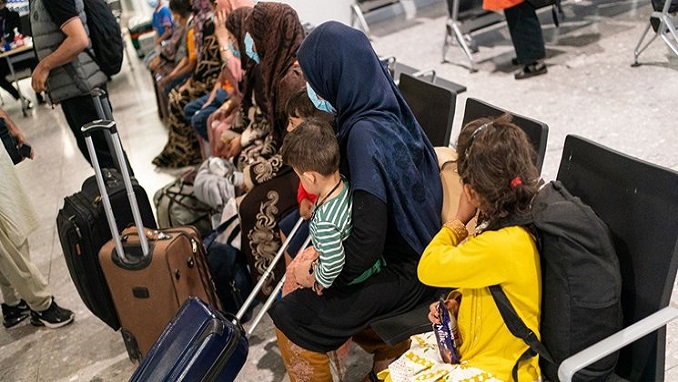
One year after the United States withdrew its military from Afghanistan, refugees from the country are scattered across the globe, unable to enter the United States, and unable to return home.
The Taliban takeover has created a massive Afghan diaspora. For Afghans who did not get out of the country on a U.S.-sponsored flight, some left in charters that took them to wherever they could get landing rights.
This has left Afghans scattered across the globe, from Pakistan to Africa to South America. Some left Afghanistan by foot and car, spilling into neighboring countries, hoping at some point they would make it to the U.S.
Making it to America is a dream that clashes with a backlogged American bureaucracy.
A couple of the Afghan refugees were lucky enough to make it on the handful of privately-organized charter flights that left Afghanistan after the U.S.-led evacuation of the nation ended. They did not realize the destination was the United Arab Emirates’s Humanitarian City.
These refugees landed in Abu Dhabi, where the accommodations were comfortable albeit crowded with roughly 10,000 people. In September 2021, flights were still taking off to take refugees to a new life in America. But in November, that stopped, following a similar decision made to halt flights from U.S. bases in Qatar and Germany after a limited outbreak of measles. The flights did not resume for six months.
For a group of people who had already been through some of the most trying months of their lives — still grieving their exit, still worried about family members left behind in Afghanistan — the suspension of flights left many sinking into a deep depression.
Some said that living in a refugee camp makes people feel like there is no hope for the future. There is no clear program and no mechanism for how the day will go. Residents are not allowed to leave, only transported outside for medical issues that cannot be treated on-site. Funds are being exhausted or completely used up.
Impatient camp residents launched protests in February, pressing the U.S. government to resume flights. Reports indicate there may still be as many as 6,500 residents at the camp in UAE – data the State Department will not confirm.
Elsewhere across the globe are others who got out, often with financial assistance from veterans or others based in the U.S., but who now have no idea if or when they’ll make it to the states.

Be the first to comment